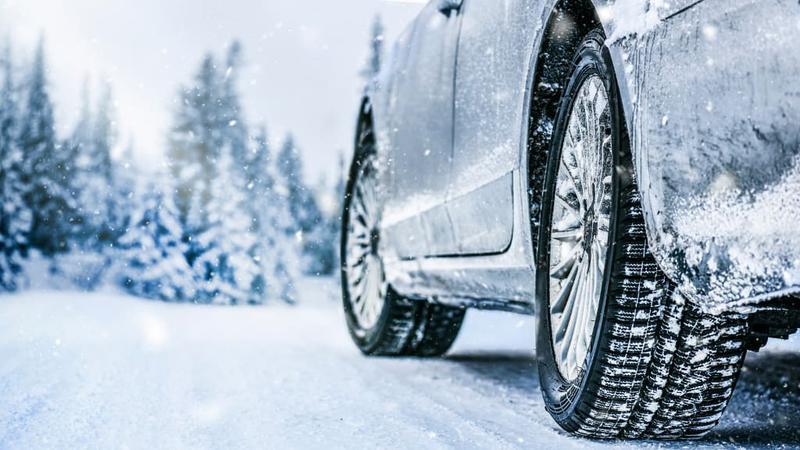Winter driving presents hazards and risks that aren't present when driving in other seasons, raising the probability that you could get into an accident and need to make an insurance claim. To keep your auto insurance premiums low, it's important to make it through the season safe and claim free. Follow these recommendations from Transport Canada to make sure that you're ready for whatever winter has in store.
1. Prepare Early
Winter in Canada can start as early as September or as late as December, but don't take the chance of getting stuck in bad weather because you weren't prepared. Prepare your vehicle in the fall and make sure that you can handle whatever comes your way.
2. Winter Roads Need Winter Tires
Winter road conditions in Canada can be tricky at best, but outfitting your car with 4 matching winter tires will help you handle whatever terrain you might come across. Winter tires are made from a different rubber compound than summer or all-season tires, and this rubber stays more pliable at colder temperatures, allowing your car better traction on ice and cold pavement. Additionally, tread patterns on winter tires tend to be deeper and more aggressive, helping your vehicle to channel water that could be sitting on roadways and dig into snow for added traction. As a bonus, you may qualify for a discount on your car insurance in Ontario- so make sure that you ask your insurance company or fill out the Winter Tires discount section in our quoter.
3. Pack An Emergency Kit
Having an emergency kit in your vehicle could save your life if you find yourself stuck on winter roads in Canada. By making sure that you're prepared with the proper equipment, you increase your chances of surviving a winter car accident. At the very least, CAA recommends that you keep the following items close at hand in your vehicle: road maps, ice scraper, flashlight, first aid kit and a blanket (a thermal survival blanket is best).
4. Practice Makes Perfect
Knowing the right techniques to respond to winter road conditions and driving situations is important - but don't wait until an emergency to try and figure them out. Knowing the theory is one thing, but having experience in a non-emergency situation will likely help you be more prepared when a real emergency happens. Therefore, get comfortable behind the wheel, take the time to practice at the start of each winter, and consider taking a defensive driving course.
5. Plan Ahead
If you're venturing out on a trip on winter roads in Canada, take the time to plan ahead. Map out your route, check current road and weather conditions, as well as weather forecasts. Make sure you share your route with someone who won't be with you, and check in with them when you arrive at your destination.
6. Clear Your Snow
It's important to make sure your vehicle is free of snow and ice before venturing out on roadways - for a number of reasons. Not only can a build-up of snow and ice cause corrosion and rust on your vehicle, but it makes it hard for other drivers to see you on the road. Consider other drivers and the harm you could cause when the snow or ice on your vehicle dislodges at high speeds, reducing visibility on the roadways and possibly damaging other cars or causing an accident.
7. Take Your Time
In bad weather, the easiest way to adjust your driving to be safer is to slow down. Driving below the speed limit is even acceptable, as it allows extra time to react to changing road and weather conditions, and reduces the impact of an accident if you lose control of your vehicle.
8. Don't Cruise
Cruise control is a convenient feature on many cars, but in wet or slippery conditions, it could cause a more serious accident. By allowing your vehicle to accelerate "on its own", you forfeit some control. Slippery conditions can cause your tires to lose traction, and cruise control will accelerate to compensate, meaning that when your tires finally hit a patch of road where they regain traction, your car performs unexpectedly - which could result in you losing control.
9. Recharge Your Batteries
Though cell phone use while operating a vehicle is frowned on, and even illegal in some parts of Canada, it's important when you're embarking on a winter road trip to make sure that your cell phone is fully charged. You may need to call emergency services in the event of an accident, and if an accident leaves your vehicle with an electrical problem, or the cold weather prevents your battery from operating properly you won't be able to use your in-car charger to keep your phone live.
10. Follow Safe Driving Practices
Overall, winter driving presents risks that aren't present in any other season, so it's even more imperative that you practice safe driving habits. Wear your seat belt. Leave lots of extra space to stop. You'll also want to slow down, because your car may not be as responsive to steering, braking or accelerating in conditions where the traction is poor. By driving with a little bit of extra caution you can keep you and your family safe on the roads and still be claim free by spring!
